Abstract
The addition of isoprenaline to an isotonic suspension of red blood cells of rainbow trout induces an amiloride-sensitive Na+ transport which is independent of Cl- and insensitive to 4,4'-diisothiocyano-2,2'-stilbene disulphonic acid (DIDS) and furosemide. Na+ uptake is accompanied by amiloride-sensitive H+ release. The H+ efflux is dependent upon the external Na+ concentration, the K0.5 value for Na+ being 16 mM. In the presence of DIDS, when the coupled NaCl entry (NaCl co-transport) induced by catecholamine is blocked, the results provide evidence for a linked movement of Na+ and H+, with a stoicheiometry of 1:1. Exchange of H+ for Na+ induces osmotic swelling of the cells which is due to the replacement of a bound proton by an osmotically active Na+ cation. In the absence of DIDS when the bulk of the Na+ uptake is the result of a coupled entry of Na+ and Cl-, H+ extrusion still occurs and the magnitude of acid excretion is identical to that found in DIDS-treated cells. This suggests that Na+-H+ exchange remains active. Addition of isoprenaline first stimulates the Na+-H+ exchange but only transiently. This is followed by a more permanent stimulation of the NaCl co-transport.
Full text
PDF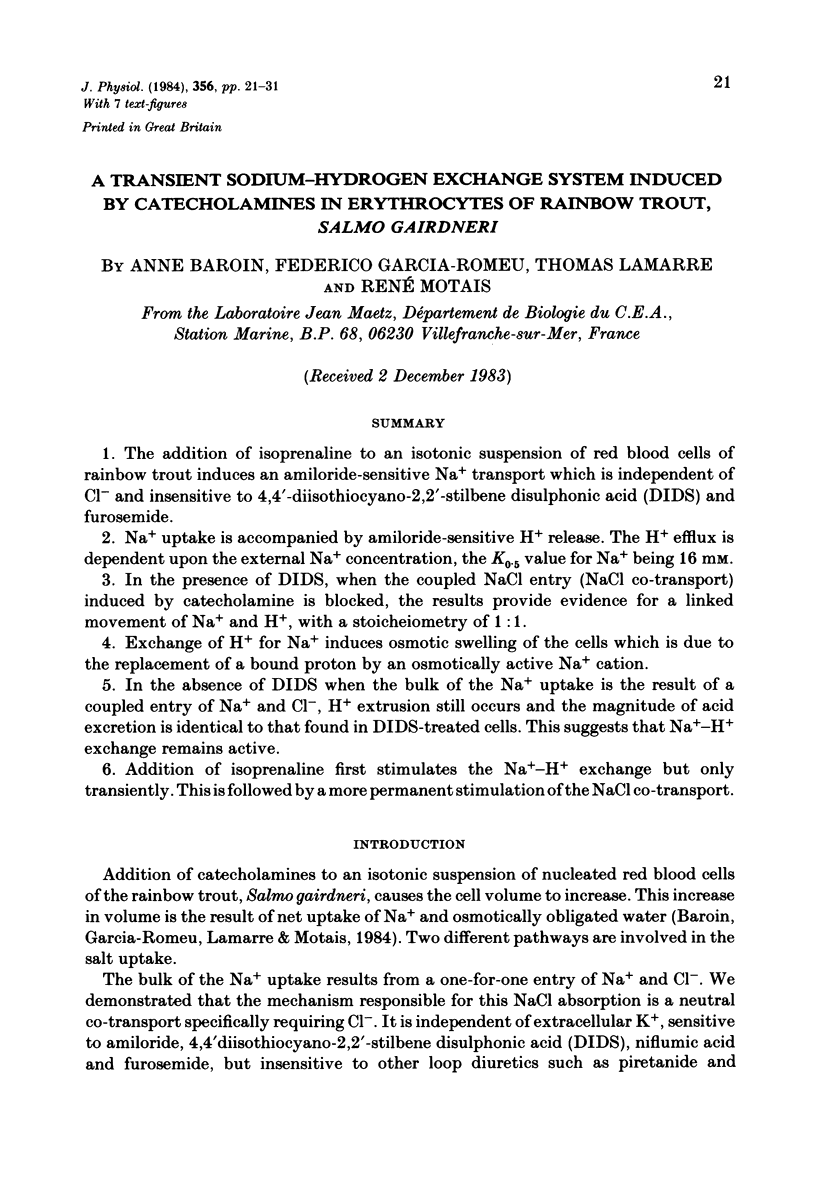
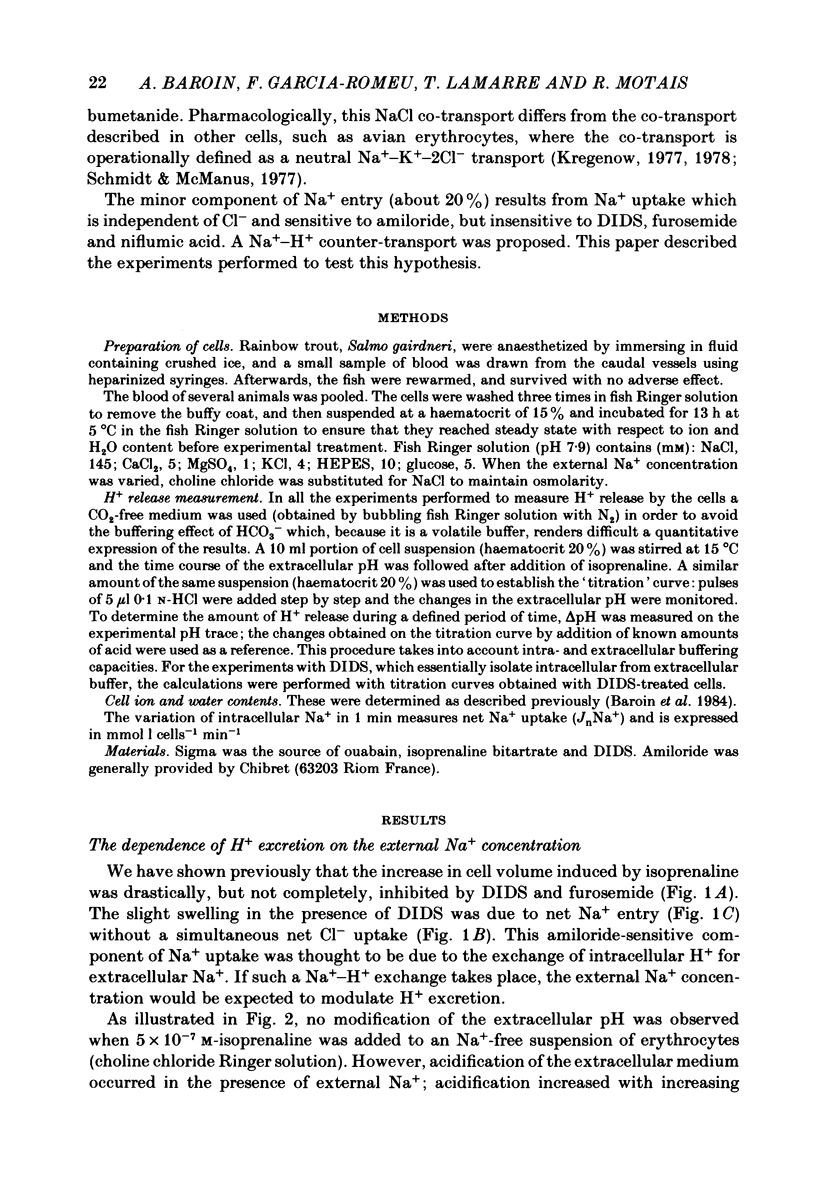
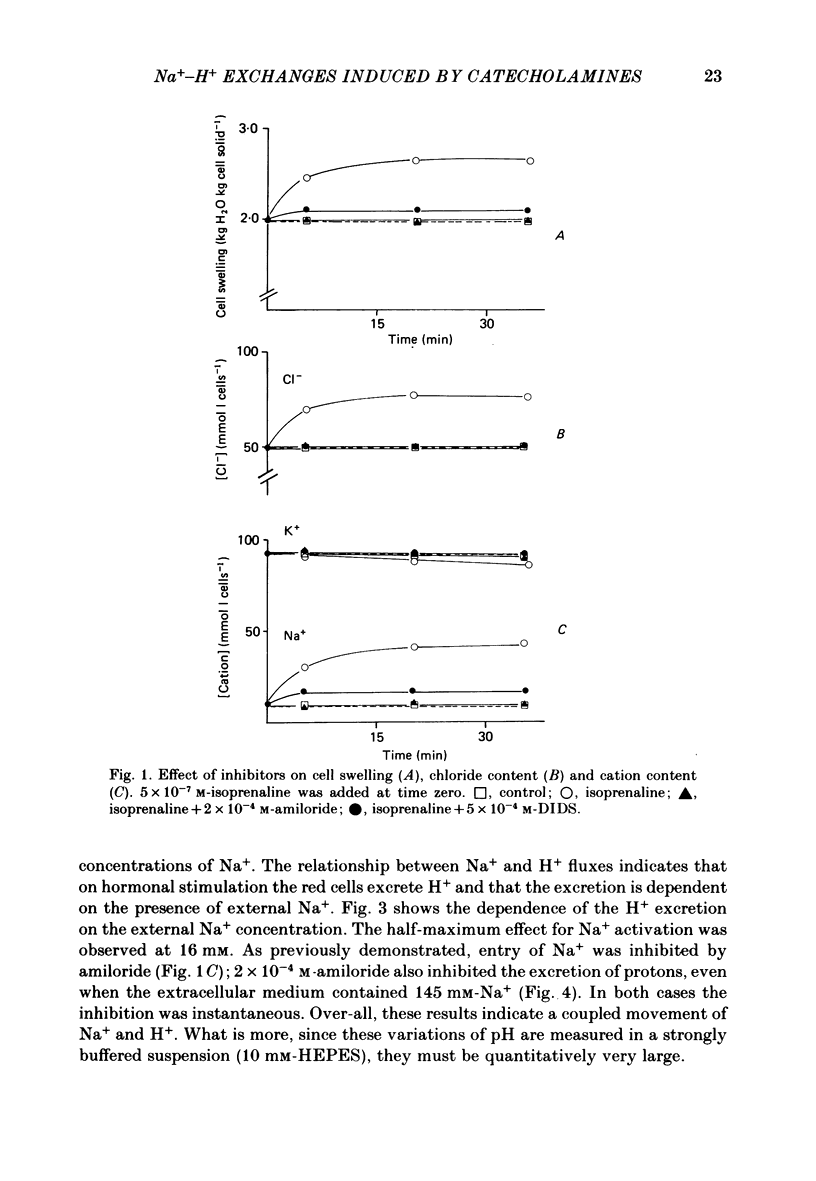
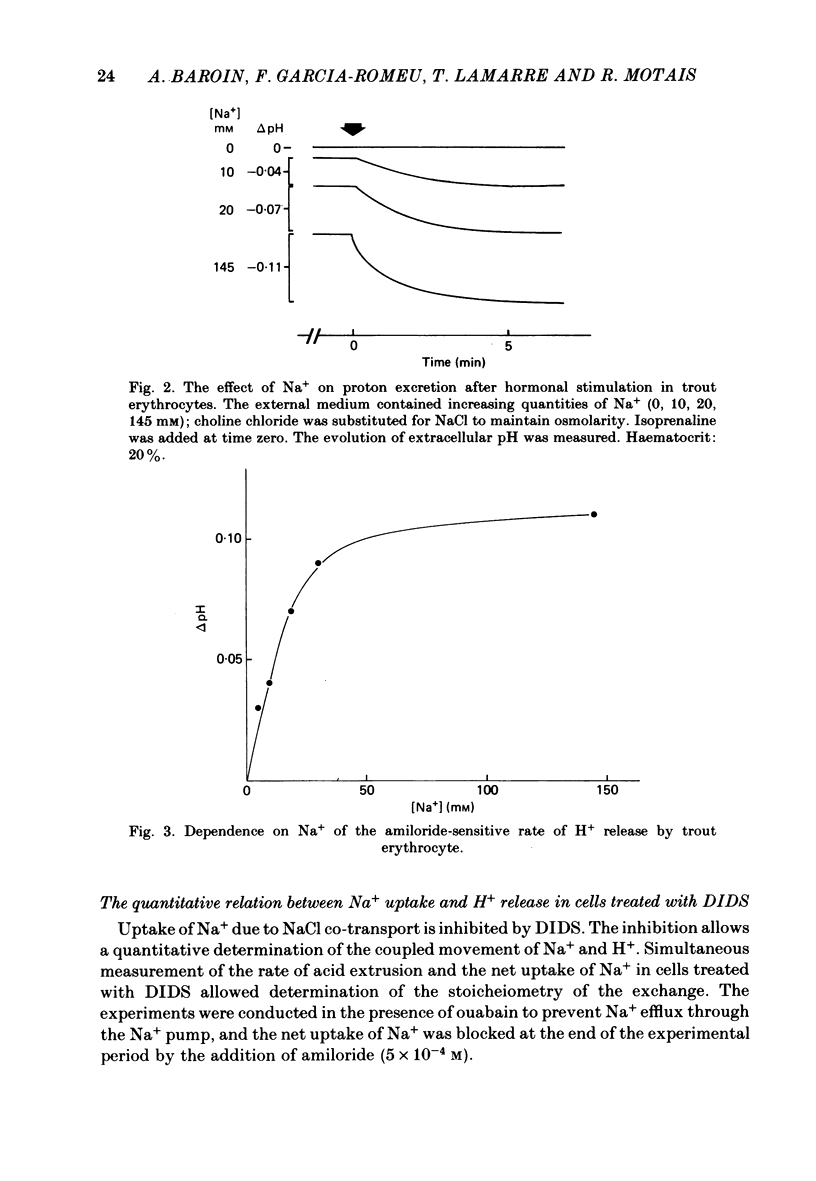
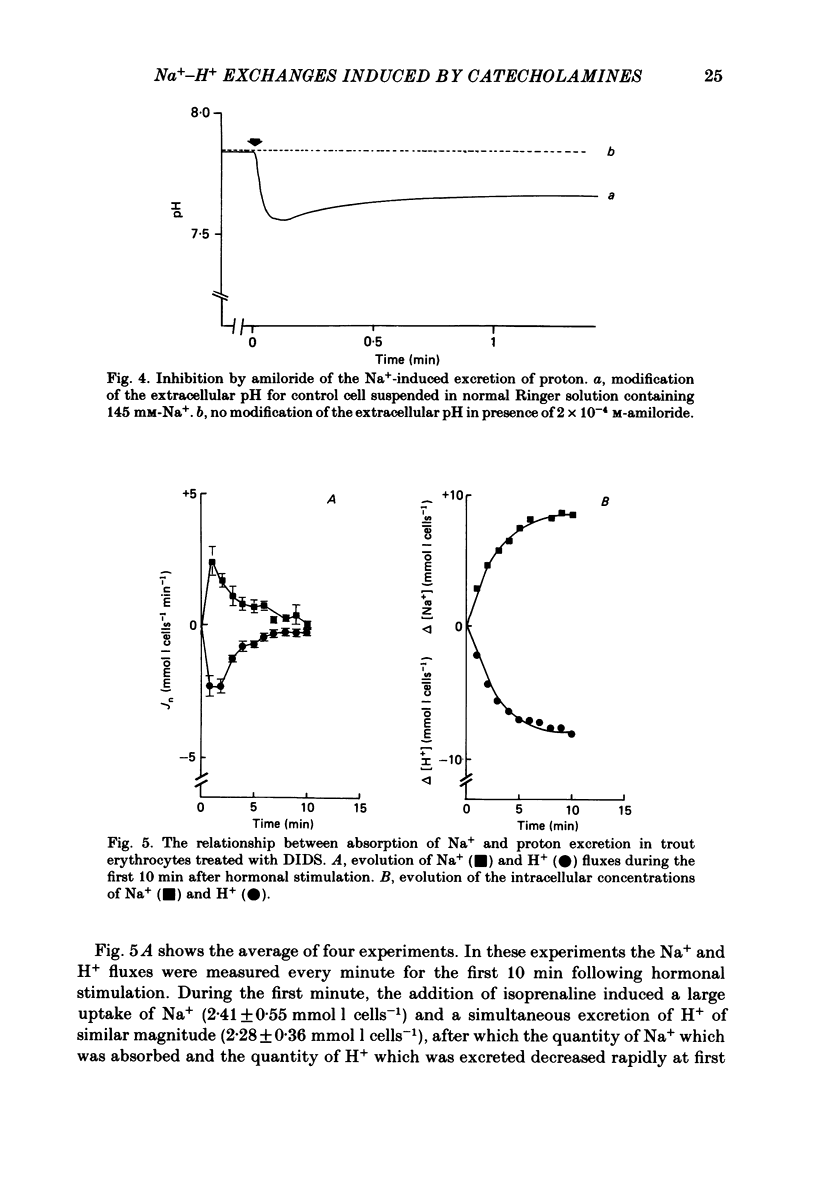
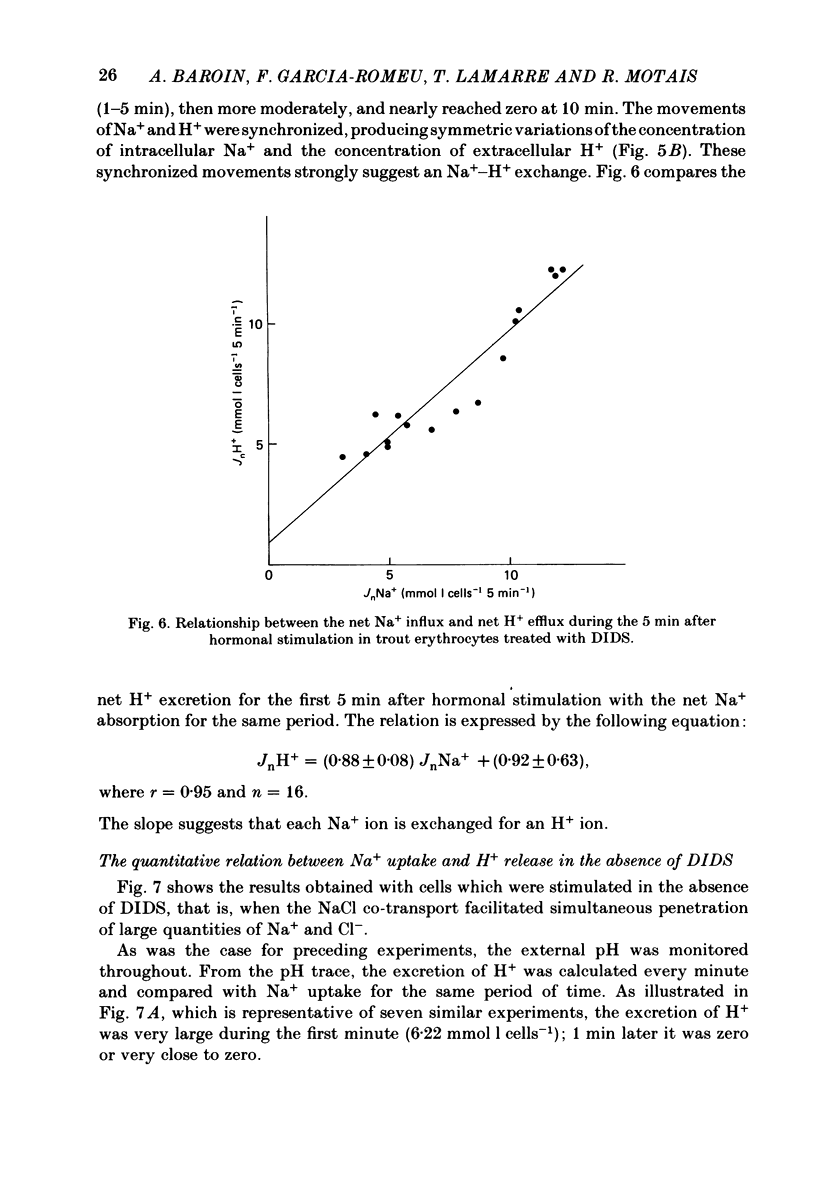
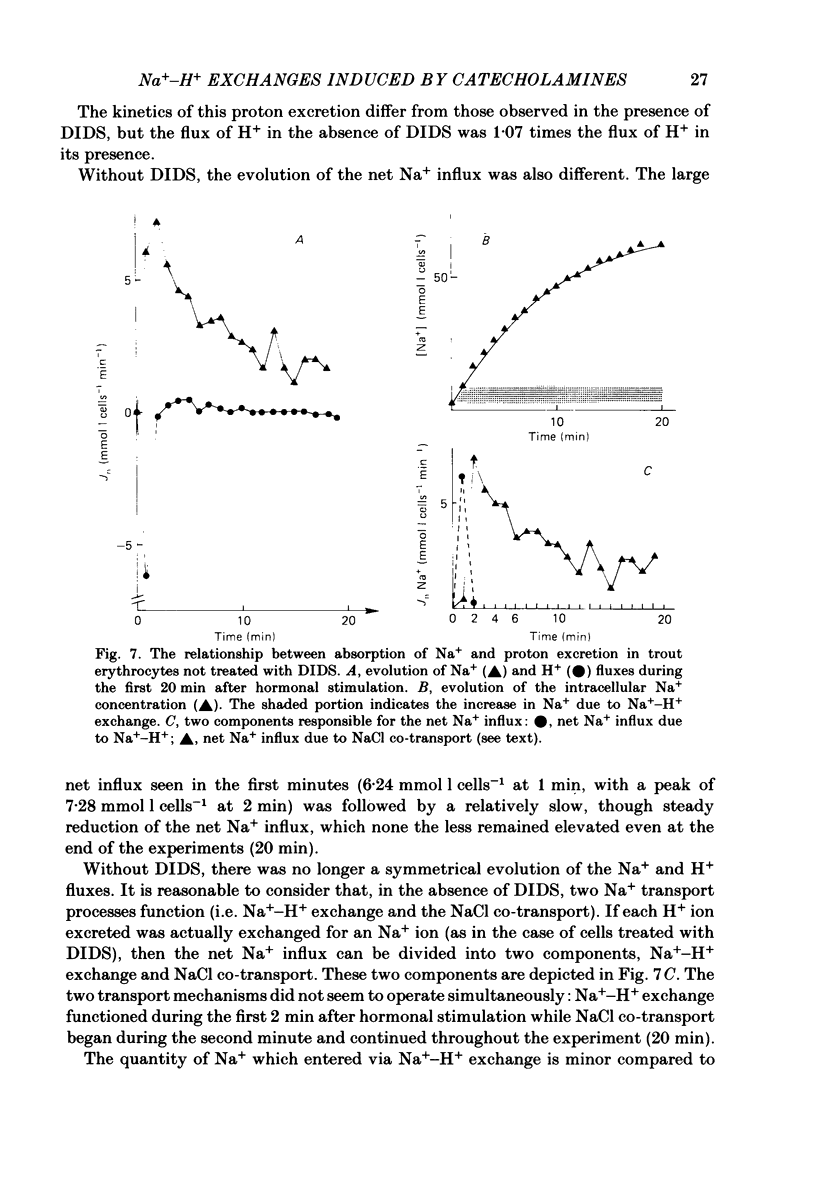
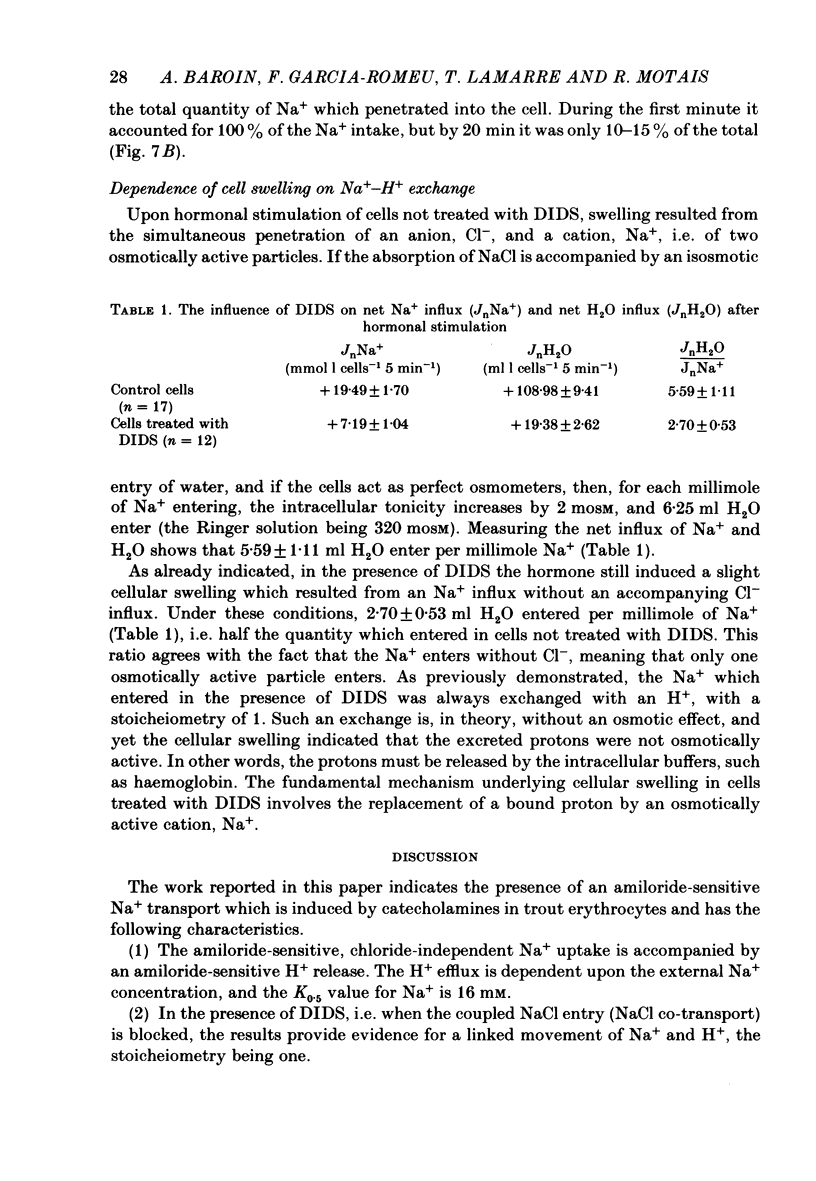
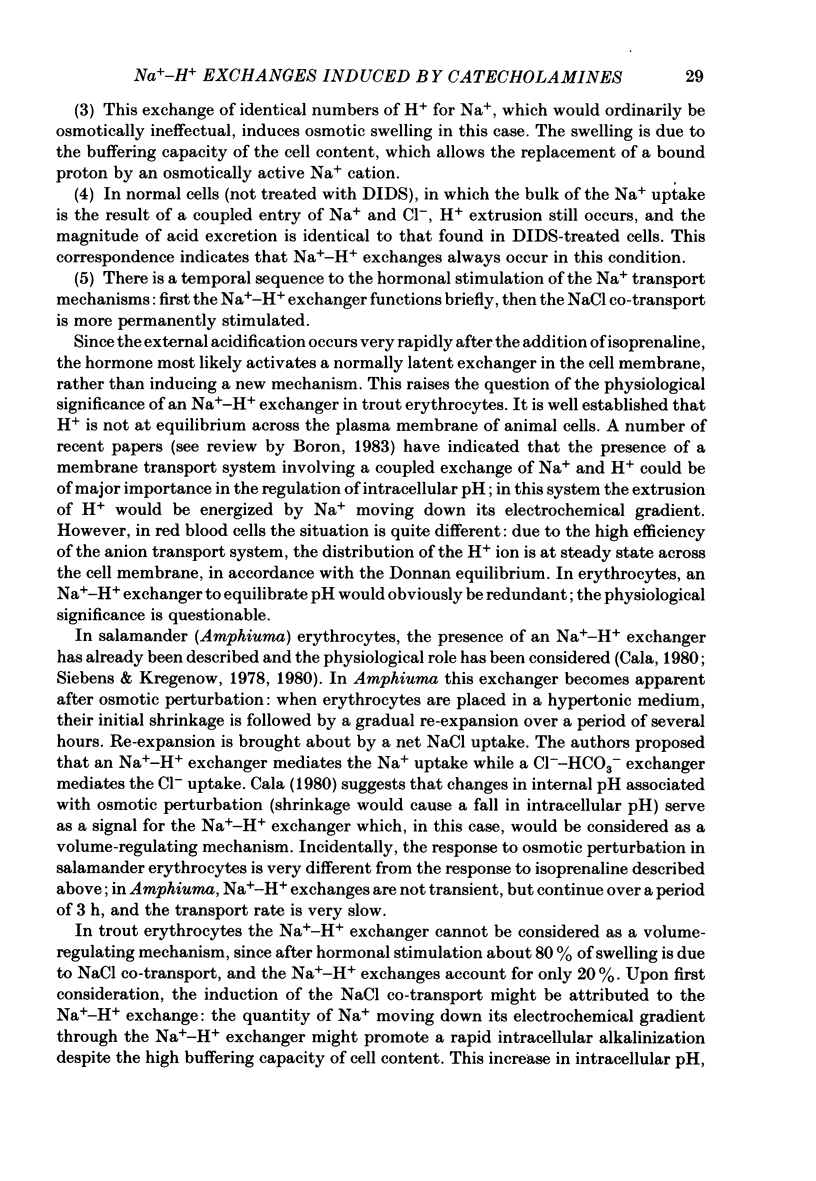
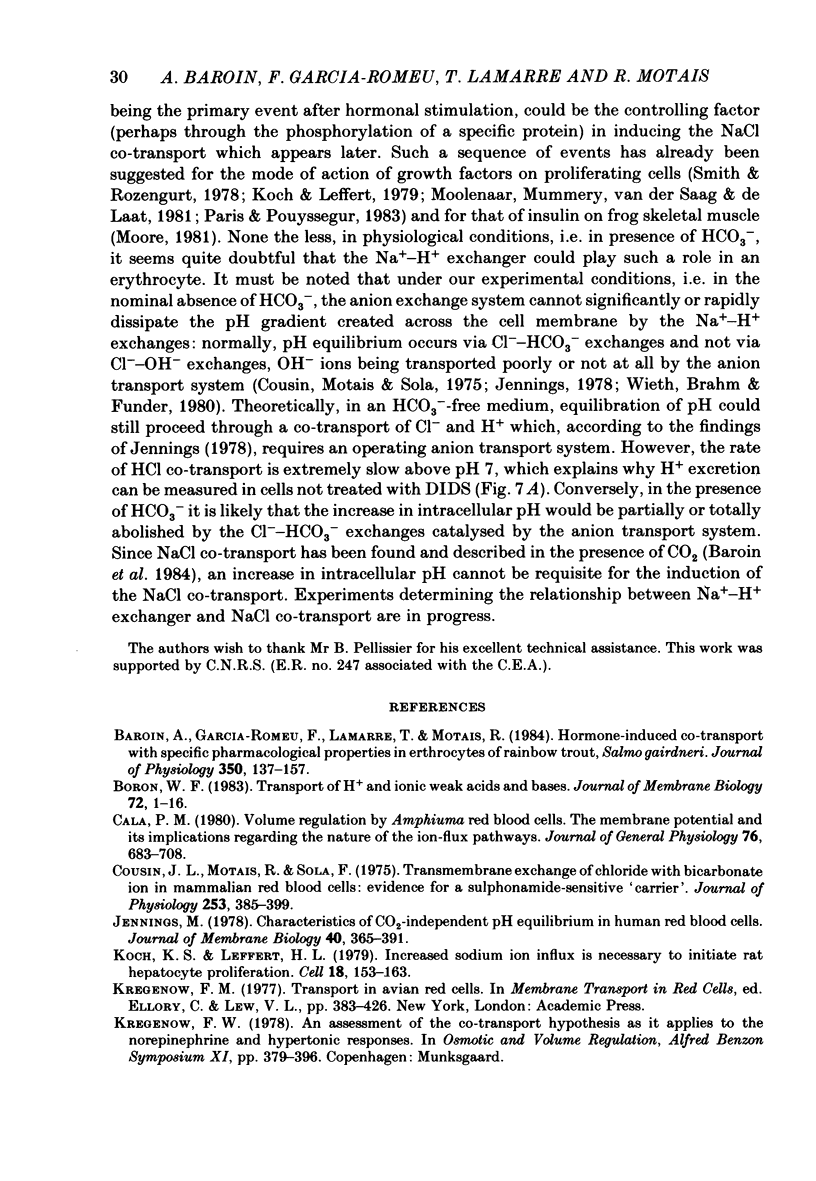
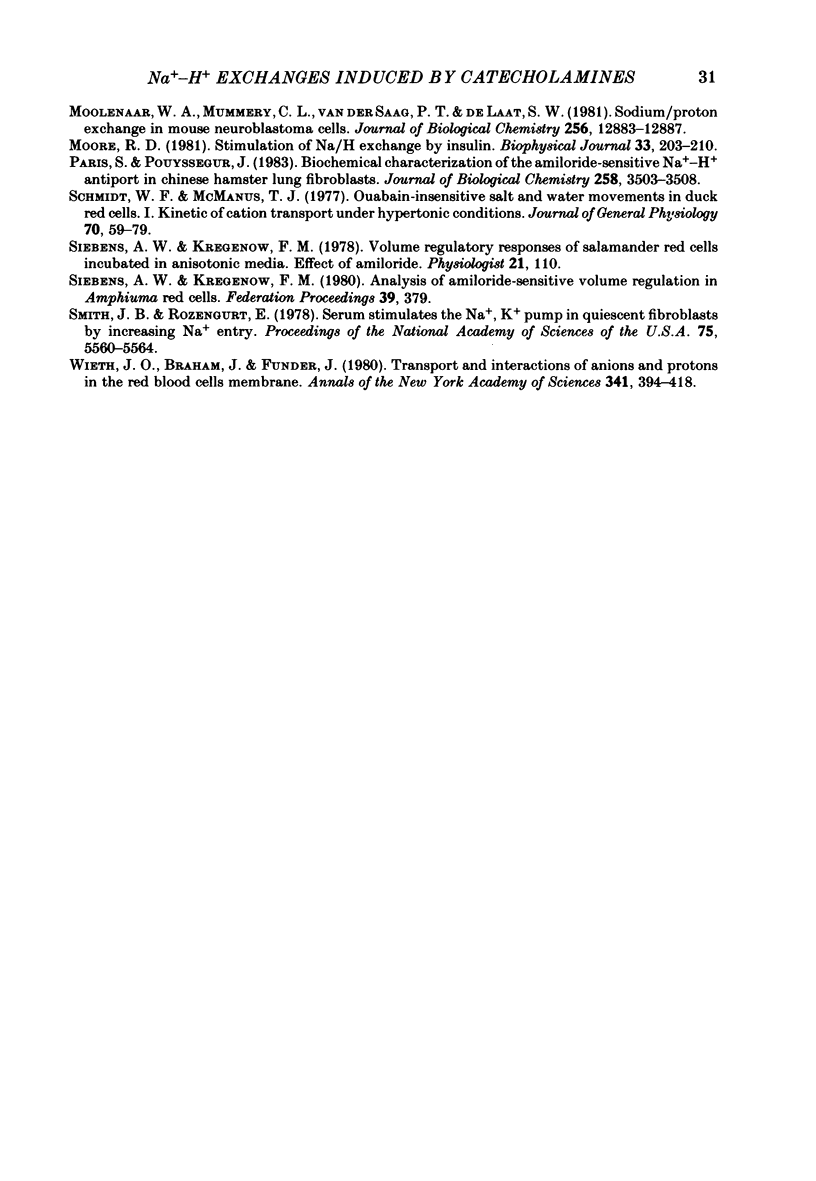
Selected References
These references are in PubMed. This may not be the complete list of references from this article.
- Baroin A., Garcia-Romeu F., Lamarre T., Motais R. Hormone-induced co-transport with specific pharmacological properties in erythrocytes of rainbow trout, Salmo gairdneri. J Physiol. 1984 May;350:137–157. doi: 10.1113/jphysiol.1984.sp015193. [DOI] [PMC free article] [PubMed] [Google Scholar]
- Boron W. F. Transport of H+ and of ionic weak acids and bases. J Membr Biol. 1983;72(1-2):1–16. doi: 10.1007/BF01870311. [DOI] [PubMed] [Google Scholar]
- Cala P. M. Volume regulation by Amphiuma red blood cells. The membrane potential and its implications regarding the nature of the ion-flux pathways. J Gen Physiol. 1980 Dec;76(6):683–708. doi: 10.1085/jgp.76.6.683. [DOI] [PMC free article] [PubMed] [Google Scholar]
- Jennings M. L. Characteristics of CO2-independent pH equilibration in human red blood cells. J Membr Biol. 1978 Jun 9;40(4):365–391. doi: 10.1007/BF01874164. [DOI] [PubMed] [Google Scholar]
- Koch K. S., Leffert H. L. Increased sodium ion influx is necessary to initiate rat hepatocyte proliferation. Cell. 1979 Sep;18(1):153–163. doi: 10.1016/0092-8674(79)90364-7. [DOI] [PubMed] [Google Scholar]
- Moolenaar W. H., Boonstra J., van der Saag P. T., de Laat S. W. Sodium/proton exchange in mouse neuroblastoma cells. J Biol Chem. 1981 Dec 25;256(24):12883–12887. [PubMed] [Google Scholar]
- Moore R. D. Stimulation of Na:H exchange by insulin. Biophys J. 1981 Feb;33(2):203–210. doi: 10.1016/S0006-3495(81)84881-3. [DOI] [PMC free article] [PubMed] [Google Scholar]
- Paris S., Pouysségur J. Biochemical characterization of the amiloride-sensitive Na+/H+ antiport in Chinese hamster lung fibroblasts. J Biol Chem. 1983 Mar 25;258(6):3503–3508. [PubMed] [Google Scholar]
- Schmidt W. F., 3rd, McManus T. J. Ouabain-insensitive salt and water movements in duck red cells. I. Kinetics of cation transport under hypertonic conditions. J Gen Physiol. 1977 Jul;70(1):59–79. doi: 10.1085/jgp.70.1.59. [DOI] [PMC free article] [PubMed] [Google Scholar]
- Smith J. B., Rozengurt E. Serum stimulates the Na+,K+ pump in quiescent fibroblasts by increasing Na+ entry. Proc Natl Acad Sci U S A. 1978 Nov;75(11):5560–5564. doi: 10.1073/pnas.75.11.5560. [DOI] [PMC free article] [PubMed] [Google Scholar]
- Wieth J. O., Brahm J., Funder J. Transport and interactions of anions and protons in the red blood cell membrane. Ann N Y Acad Sci. 1980;341:394–418. doi: 10.1111/j.1749-6632.1980.tb47186.x. [DOI] [PubMed] [Google Scholar]


